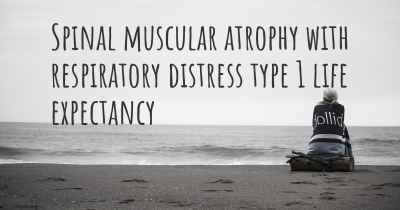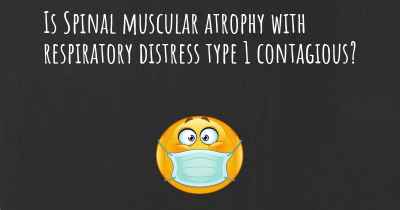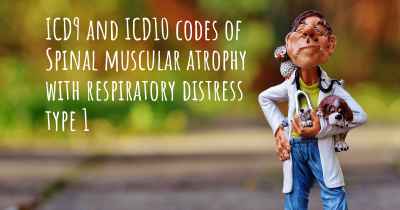Which are the causes of Spinal muscular atrophy with respiratory distress type 1?
See some of the causes of Spinal muscular atrophy with respiratory distress type 1 according to people who have experience in Spinal muscular atrophy with respiratory distress type 1

Spinal Muscular Atrophy with Respiratory Distress Type 1 (SMARD1) is a rare genetic disorder that primarily affects the muscles involved in breathing and movement. It is characterized by progressive muscle weakness and respiratory difficulties, often leading to life-threatening complications. SMARD1 is caused by mutations in the IGHMBP2 gene, which provides instructions for producing a protein essential for the survival and function of motor neurons.
1. Genetic Mutations: The primary cause of SMARD1 is mutations in the IGHMBP2 gene. These mutations disrupt the production of the IGHMBP2 protein, which is crucial for the maintenance and survival of motor neurons. Motor neurons are responsible for transmitting signals from the brain to the muscles, enabling movement and breathing. Without functional IGHMBP2 protein, motor neurons degenerate, leading to muscle weakness and respiratory distress.
2. Autosomal Recessive Inheritance: SMARD1 follows an autosomal recessive inheritance pattern, meaning that both parents must carry a copy of the mutated gene for their child to develop the condition. When both parents are carriers, there is a 25% chance with each pregnancy that the child will inherit two copies of the mutated gene and develop SMARD1.
3. Genetic Testing: Genetic testing can identify mutations in the IGHMBP2 gene, confirming a diagnosis of SMARD1. This testing is particularly important for families with a history of the condition or those who have had a child affected by SMARD1. Early diagnosis allows for appropriate medical management and support.
4. Clinical Features: SMARD1 typically presents in infancy, with symptoms appearing within the first few months of life. The initial signs may include difficulty breathing, weak cry, poor feeding, and reduced movement. As the disease progresses, muscle weakness becomes more pronounced, leading to respiratory failure and the need for mechanical ventilation. Affected individuals may also experience muscle wasting, joint contractures, and scoliosis.
5. Management and Treatment: Currently, there is no cure for SMARD1. Treatment primarily focuses on managing symptoms and providing supportive care. This may involve respiratory support through mechanical ventilation, physical therapy to maintain muscle strength and flexibility, and nutritional interventions to ensure adequate feeding. Regular monitoring and multidisciplinary care are essential to address the evolving needs of individuals with SMARD1.
6. Ongoing Research: Scientists and researchers are actively working to better understand SMARD1 and develop potential therapies. Gene therapy and other innovative approaches hold promise for future treatment options. Clinical trials and collaborative efforts aim to improve the quality of life and outcomes for individuals affected by SMARD1.
In conclusion, Spinal Muscular Atrophy with Respiratory Distress Type 1 (SMARD1) is a rare genetic disorder caused by mutations in the IGHMBP2 gene. These mutations disrupt the production of a protein essential for motor neuron survival, leading to progressive muscle weakness and respiratory difficulties. Early diagnosis, supportive care, and ongoing research efforts are crucial in managing this condition and improving the lives of affected individuals.








